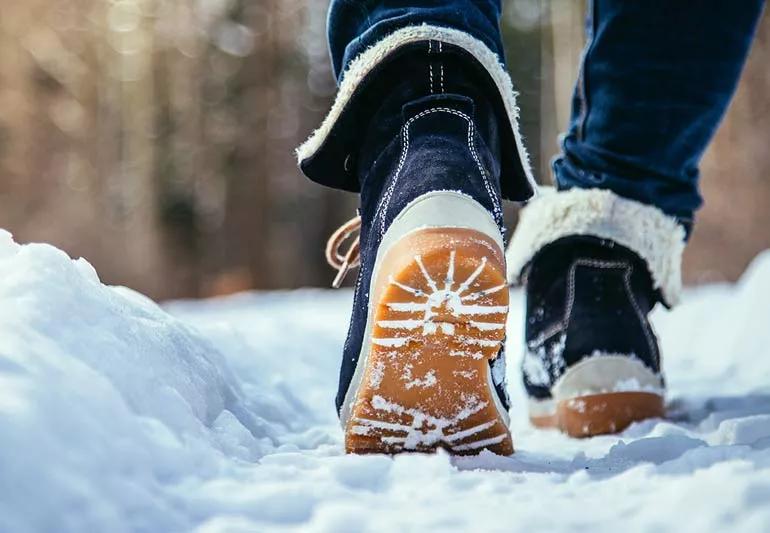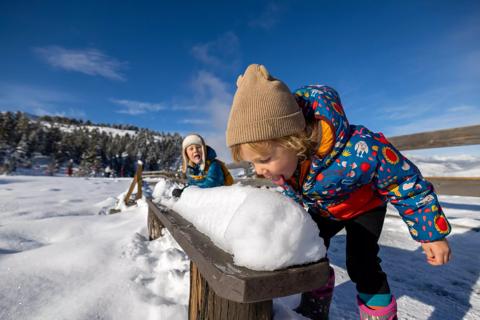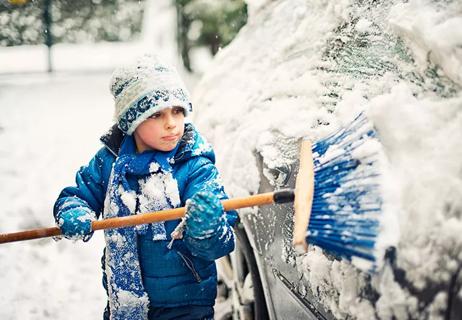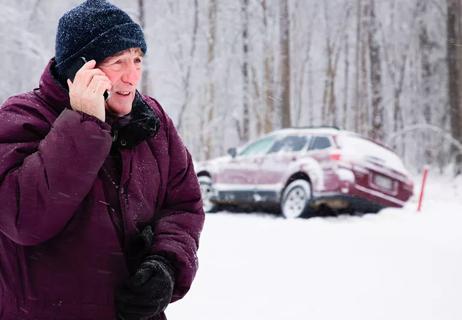Taking slow, short steps and wearing proper footwear can go a long way in preventing falls

It’s a cold, icy world out there — and the snow just keeps falling. Don’t let falls, injuries or winter-related accidents slow you down, though. Before the snow starts accumulating and sidewalks get icy, make sure you’re prepared.
Advertisement
Cleveland Clinic is a non-profit academic medical center. Advertising on our site helps support our mission. We do not endorse non-Cleveland Clinic products or services. Policy
“We all should identify and address risky conditions that we can control,” says hospitalist Aaron Hamilton, MD.
Here are some winter walking tips you’ll want to try out the next time you venture out on a winter day.
The world beyond your house may be a little unpredictable after the snow and ice, but you can take control of making your surrounding areas as safe as possible for your daily routines. This means using salt as needed on the porch steps and shoveling or plowing your driveway regularly. You can also pour sand or grit over any icy areas that may appear overnight.
First, be sure you know how to identify winter dangers before you step toward them. One of the big ones is black ice — and trust us, it’s as ominous as falling icicles. The most dangerous thing about this kind of ice is that it blends in completely with the pavement underneath, making the surface not only slippery, but also nearly invisible. The best way to identify black ice is to use context clues. Areas like parking lots, sidewalks or driveways are all susceptible to black ice. Pro tip: If it’s a particularly dark area, it’s best to go around or avoid it completely.
While unpacking your winter coat and hats, make sure you dust off your trusty snow boots as well. Tall boots with thick soles will keep you warm and make it easy to walk through slush and snow. Non-slip rubber soles are best for those extra icy days. Plus, a water-resistant shoe goes a long way to help keep your toes warm. If you’re still trying to stay active during the winter by running or cycling, be sure you’re prepared with the necessary gear to keep you safe.
Advertisement
No shortcuts! With the abundance of snow during the winter, it’s best to stay on designated paths that have been cleared (if possible). Stick to sidewalks that are plowed and make sure to always use crosswalks. Remember, certain areas that you’re familiar with may look different after a snowfall, so check the map and make sure you have a clear, safe route for any hike or destination you’re heading toward.
You can take note of walking safely in the winter from penguins: Keep your feet flat, pointed slightly outward and keep your arms at your sides for balance, and take slow, short steps. You may feel a little silly shuffling around, but this is the best way to ensure an icy surface doesn’t get the best of you.
The same outdoor steps you walk up and down to get to work may now be covered in ice or sleet. Stay alert! Be sure to use handrails to help keep your balance when going up and down any stairs. Even indoor stairs in the hallways of buildings can have melted ice that can cause a hazard. Whenever possible, hold on to something!
Even if you’re driving to your destination, you should still be cautious when entering and exiting your car. Ice can form in between cars on the ground and is often hidden by light snow. Also, be sure to thoroughly scrape your car windows (as well as de-ice the windshield wipers) before driving in winter conditions.
Maintaining good balance is one factor in avoiding falls. While it’s important to do everything you can to prevent a fall, sometimes a slip still happens. If it does, be sure you know how to fall safely. Dr. Hamilton recommends covering your head as much as possible and rotating your body so you fall on your side, instead of your back or front. As much as possible, try to keep your body loose and arms and legs bent to avoid injury.
Even when winter hits, life goes on. You’ll still have to leave your house for work, run errands and complete outdoor chores. Take your time and use the right precautions to stay healthy. By wearing the proper winter gear, paying attention to how you walk and avoiding icy areas, you’ll keep yourself safe (and warm) during the winter season.
Advertisement
Learn more about our editorial process.
Advertisement

If the flakes are undisturbed, pristine white and come from the top layer, it’s typically safe to indulge in a scoop

Bottom line? Dress warm, be careful and plan ahead to get the most out of the season

Sneak in exercise when you can, pack your own lunch and make time for mental health

With planning and precautions, you may be able to keep winter health issues at bay

Some heat escapes if you don’t wear a hat, but it’s not as much as you might think

How to keep kids warm, healthy and safe

The short answer from an emergency medicine physician

Here's what you need to round up for your trunk

Type 2 diabetes isn’t inevitable with these dietary changes

Applying a hot or cold compress can help with pain